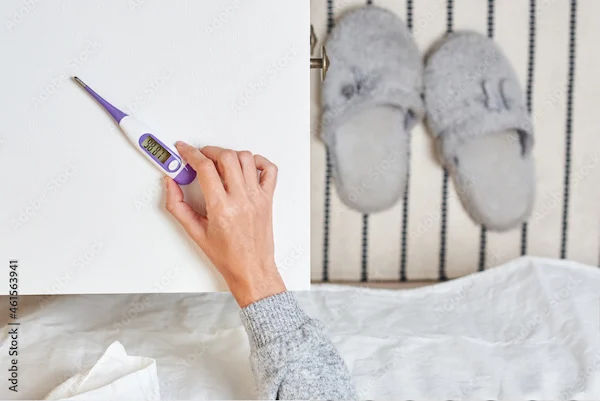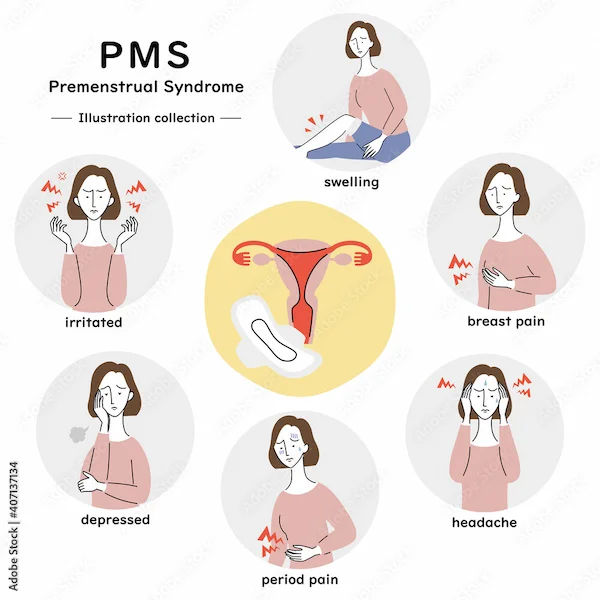Seasonal Affective Disorder (SAD)
Know about the SAD, prevalence, risk factors and myths, causes, signs and symptoms. Learn about the diagnosis and treatment options and more.

.webp?tr=q-80,f-webp,w-350,dpr-2,c-at_max 700w)
Introduction
If your mood drops every year as the days get shorter, you’re not imagining it. Seasonal affective disorder (SAD) is a form of depression that follows a seasonal pattern—most often starting in late autumn or winter and easing in spring. Unlike a passing case of the “winter blues,” this disorder affects daily life: energy dips, sleep changes, cravings, and motivation can all shift in predictable ways. However, SAD is treatable, and many people feel better with the right mix of light, routine, therapy, and, when needed, medication.
In this complete guide to seasonal affective disorder, you’ll learn what SAD is, how to recognise the signs, and why it happens. We’ll cover evidence-based treatments like light therapy, CBT-SAD, and bupropion XL, plus practical, step-by-step routines you can start at home. If symptoms persist beyond two weeks or interfere with work, school, or relationships, consult a doctor online with Apollo24|7 for further evaluation.
What is Seasonal Affective Disorder?
Let's see further details on SAD:
SAD vs. “winter blues”
Seasonal affective disorder is a type of depression that comes and goes with the seasons. In DSM-5, it’s diagnosed as major depressive disorder with seasonal pattern. Many people feel a bit “slowed” in winter, but SAD goes further: persistent low mood, loss of interest, sleep and appetite changes, and difficulty functioning. Mild seasonal dips can be uncomfortable; SAD is impairing and typically recurs around the same time each year.
Consult Top General Practitioner for Personalised Advice
Winter-pattern vs. summer-pattern SAD
Winter-pattern SAD (most common) starts in late fall/early winter and remits in spring. Hallmarks: low energy, hypersomnia, carbohydrate cravings, weight gain, and social withdrawal.
Summer-pattern SAD (less common) appears in late spring/summer: poor appetite, weight loss, insomnia, agitation, and anxiety. Heat and bright light may contribute.
How SAD fits into depression (DSM-5 specifier)
Clinicians look for at least two consecutive years where depressive episodes begin and remit in specific seasons, with more seasonal than nonseasonal episodes over a lifetime. This pattern helps distinguish SAD from recurrent depression without seasonality.
Who gets SAD? Prevalence, risk factors, and myths
SAD ; its prevalence, risk factors and myths include:
How common is SAD, and who’s at higher risk?
Estimates vary by study and latitude. Roughly 0.5–3% experience full SAD, while 10–20% report milder “winter blues”. Women are affected more often than men; onset is typically young adulthood, but teens and older adults can be affected. Family history of depression or SAD, personal history of depression, and living far from the equator increase risk.
Latitude, daylight, and climate: what really matters
Shorter daylight length and later winter sunrise are key drivers. Cloud cover, pollution haze, and indoor lifestyle can worsen light deprivation even at lower latitudes. Shift work, long commutes in darkness, and limited window exposure compound risk.
Common myths (e.g., “It’s just a mood”)
1. Myth: “SAD is just being lazy.” Fact: SAD is a diagnosable depressive disorder with biological underpinnings [1–3].
2. Myth: “Any bright lamp helps.” Fact: Therapeutic light has specific intensity (10,000 lux), UV filters, and timing.
3. Myth: “Move to a sunny place and it’s cured.” Fact: Many improve with light therapy and routine without relocating; others may still need CBT-SAD or medication.
Signs and symptoms you can recognise
The signs and symptoms include:
Winter-pattern SAD hallmark signs
1. Depressed mood most of the day
2. Loss of interest in activities
3. Excessive sleep or difficulty waking (“sleep inertia”)
4. Increased appetite, carb cravings, weight gain
5. Low energy, slowed movement, difficulty concentrating
6. Social withdrawal (“hibernation”)
Symptoms typically last at least two weeks and recur seasonally [1–4].
Summer-pattern SAD differences
1. Insomnia, reduced sleep
2. Decreased appetite, weight loss
3. Restlessness, anxiety
4. Irritability
If your symptoms flip between seasons, note the pattern—it guides treatment timing.
When symptoms signal urgent help
Seek urgent or emergency help if you have thoughts of self-harm, suicide, or cannot care for yourself. In non-urgent cases, if symptoms persist beyond two weeks or impair daily life, consult a doctor online with Apollo24|7 for further evaluation and a tailored plan.
Why SAD happens: The science made simple
The SAD happens due to the following reasons
Light, circadian rhythms, and melatonin
Your internal clock uses morning light to set “daytime mode.” In winter, sunrise arrives later. Without sufficient early light, melatonin (the sleep signal) stays elevated longer; you feel groggy and down. Morning bright light corrects this by advancing the clock, lowering morning melatonin and improving alertness and mood.
Serotonin, vitamin D, and carbohydrate cravings
Research suggests winter changes in serotonin activity and increased serotonin transporter levels may lower available serotonin. That can drive carbohydrate cravings (which temporarily boost serotonin). Vitamin D may modulate mood pathways, but evidence is mixed; deficiency is common in winter and worth checking, especially if you’re mostly indoors.
Why timing matters more than “more light”
It’s not just brightness—it’s when you get it. Bright light within 30–60 minutes after waking has stronger circadian effects than the same amount later. Consistent timing is often the difference between modest and meaningful improvement.
Getting diagnosed: Tools, timelines, and tests
The diagnosis includes:
Clinical evaluation and DSM-5 criteria
A clinician will assess mood, function, seasonality, and medical history. Diagnosis typically requires a seasonal pattern for at least two consecutive years with more seasonal than nonseasonal depressive episodes. They also consider bipolar spectrum features.
Self-assessments (PHQ-9, SPAQ) and tracking
Screeners like PHQ-9 (depression) and SPAQ (Seasonal Pattern Assessment Questionnaire) can help document symptoms and seasonality. A mood/sleep log for 2–4 weeks aids accurate diagnosis and treatment choices.
Ruling out lookalikes (thyroid, anaemia, sleep disorders)
Hypothyroidism, iron-deficiency anaemia, sleep apnea, and medication effects can mimic SAD. Labs sometimes considered: TSH (thyroid), CBC (anaemia), vitamin D, and HbA1c (if weight changes or cravings are significant). Apollo24|7 offers convenient home collection for tests like vitamin D, TSH, and HbA1c.
If your condition does not improve after trying these methods, book a physical visit to a doctor with Apollo24|7 or consult online for next steps.
Treatment overview: What actually works
Treatment options include:
First-line options: light therapy and CBT-SAD
1. Bright light therapy: Daily morning exposure (usually 10,000 lux for 20–30 minutes) is effective for winter-pattern SAD for many people.
2. CBT-SAD: A specialised form of cognitive behavioural therapy targeting seasonal thoughts and behaviours improves symptoms and may prevent relapse across future winters.
Medications and when to consider them
SSRIs (e.g., sertraline, fluoxetine) and bupropion XL are commonly used; bupropion XL has specific approval for preventing seasonal major depressive episodes in adults. Medication may be added if light therapy/CBT are insufficient or symptoms are moderate to severe.
Building a combined plan
Many do best with a combination—light therapy for quick symptom relief plus CBT-SAD for durable skills. Add medication if symptoms are severe, or if previous seasons didn’t respond to non-drug strategies.
Light therapy, step by step
The process of light therapy involves
Choosing a 10,000 lux device (safety features)
• Look for 10,000 lux at a comfortable sitting distance, UV-filtered, broad light surface, and medical-grade certifications.
• “Full spectrum” is less important than intensity and UV filtering. Avoid unfiltered UV or tanning lamps.
Timing, duration, and positioning for best results
1. Start with 20–30 minutes within 30–60 minutes of waking. Keep eyes open, but don’t stare directly into the light. Place the box at eye level or slightly above, at 30–60 cm, depending on the device.
2. Use daily in autumn/winter; many start in early autumn before symptoms peak. Adjust duration if partial response (up to 45–60 minutes, or split sessions).
3. For night owls, aim even earlier relative to your wake time to advance your body clock.
Side effects, safety, and bipolar precautions
Common side effects: eye strain, headache, nausea, irritability. Reduce by increasing the distance or shortening sessions. People with bipolar disorder may risk hypomania/mania; discuss light therapy with a psychiatrist first. If you have eye disease or take photosensitising medications, get medical guidance before starting.
CBT-SAD and other psychotherapy approaches
The approaches include:
What CBT-SAD sessions look like
CBT-SAD combines behavioural activation (scheduling meaningful, energising activities) with cognitive techniques that challenge “seasonal beliefs” such as “I can’t function in winter.” Therapists often add exposure to pleasant winter activities and skills to reduce avoidance.
Behavioural activation and thought skills you can use today
Activity mapping: Identify low-effort, high-reward actions (“sunlight snacks”: 10-minute midday walk, warm beverage with a friend). Thought reframes: Replace “I always crash in January” with “My plan reduces symptoms when I start by October.”
Light pairing: Anchor morning light with a small ritual (tea, journaling) to build habit strength.
Long-term durability vs. symptom relief
Randomised trials show CBT-SAD is as effective as light therapy acutely, with better prevention of recurrence at 1–2 year follow-up. Many people continue light therapy; CBT-SAD skills often stick, reducing relapse even if the lamp gathers dust.
Medications and supplements: Evidence and cautions
SSRIs, bupropion XL, and what the evidence says
SSRIs (sertraline, fluoxetine) can relieve SAD symptoms, especially when there’s significant impairment. Bupropion XL has specific approval to prevent seasonal major depressive episodes when started in the early fall; doctors may continue through winter [3,4]. Side effects and drug interactions vary—review your history with a clinician.
Melatonin, vitamin D, and omega-3s
Melatonin: Low-dose, correctly timed melatonin (often early evening) can help advance the circadian clock, especially for night owls. Timing is critical—ask your doctor. Vitamin D: Mixed evidence for treating SAD, but correcting deficiency benefits overall health; deficiency is common in winter. Apollo24|7 offers home collection for vitamin D testing.
Omega-3s: Some mood benefits in depression, but data are limited in SAD specifically.
Interactions and when to talk to a doctor
If you’re on multiple medications, have bipolar disorder, eye conditions, or sleep disorders, consult a clinician before starting light therapy, melatonin, or new supplements. If symptoms persist beyond two weeks despite home strategies, consult a doctor online with Apollo24|7 for further evaluation.
Lifestyle strategies that make a difference
Lifestyle strategies include:
1. Morning light anchor, movement, and sleep schedule
2. Lock in a consistent wake time 7 days/week.
3. Morning “L-BAM” routine: Light (lamp or outdoor), Breath (2–3 minutes slow breathing), Activity (5–10 minutes movement), Meal (protein-forward breakfast).
4. Aim for 30–60 minutes of outdoor light by late morning when possible.
Food, caffeine, and alcohol choices
1. Stabilise energy: prioritise protein, fibre, and complex carbs; plan carb “comforts” after balanced meals.
2. Caffeine earlier in the day; minimise alcohol (a sleep disruptor and mood depressant).
Social connection and stress buffers
1. Schedule weekly social touchpoints before motivation dips.
2. Use micro-goals (10-minute tasks) to counter inertia.
3. Consider a dawn simulator alarm to smooth morning wake-ups.
A 4-week winter-ready plan you can personalise
Week 1: Baseline, light starter, and sleep reset
1. Track mood, sleep, and energy. Start 10,000 lux light therapy for 20 minutes each morning; set a fixed wake time.
2. Order labs if needed (TSH, vitamin D), with Apollo24|7 home collection for convenience.
Week 2: Activity ramp + CBT-SAD skills
Add two scheduled activities (movement + social).
Practice one thought reframe daily; use a brief journal prompt (“One small action that helped today was…”).
Weeks 3–4: Optimise and sustain
1. Adjust light duration (20–45 minutes) based on response.
2. Add one enjoyable winter-specific activity (indoor hobby, group class).
3. Prepare a “grey day” kit: lamp, warm layers, favourite playlist, pre-planned 10-minute walk route.
Living with SAD in India and other low-latitude regions
The SAD prevalence includes:
Pollution haze and monsoon gloom: practical tips
Even at lower latitudes, haze and monsoon clouds reduce outdoor light. Use a 10,000 lux lamp in the morning; target a midday outdoor break when the sky is brightest. Consider indoor spaces with skylights or bright courtyards.
Midday outdoor strategies and balcony light hacks
Sit facing outward on balconies to maximise sky exposure. Reflective light from pale walls, light-colored ground, and shaded but open spaces can increase perceived brightness.
Accessing care and labs conveniently
If symptoms persist beyond two weeks or cause significant distress, consult a doctor online with Apollo24|7 for tailored advice. For lab checks (vitamin D, TSH, HbA1c), Apollo24|7 offers home collection services to make testing easier during busy or low-energy periods.
Conclusion
Seasonal affective disorder doesn’t have to define your winters. By understanding how light and timing drive your energy, mood, and sleep, you can use simple, evidence-based tools to feel better. For many, a 10,000 lux light box within an hour of waking, combined with a consistent sleep schedule and short daily movement, makes a visible difference within two weeks.
Your environment and habits are powerful levers. Set up your morning “light anchor,” curate a cosy but bright space, and plan social touchpoints before motivation dips. If you live with haze, clouds, or long indoor hours, prioritise midday outdoor time and consider medical-grade light therapy at home. If symptoms persist beyond two weeks, interfere with work or relationships, or raise safety concerns, consult a doctor online with Apollo24|7 for individualised support and, if appropriate, convenient home lab testing. With the right plan and support, you can navigate the darker months with more clarity, energy, and steadiness.
Consult Top General Practitioner for Personalised Advice
Consult Top General Practitioner for Personalised Advice

Dr Syed Mateen Pasha
General Physician
2 Years • MBBS
Bengaluru
PRESTIGE SHANTHINIKETAN - SOCIETY CLINIC, Bengaluru

Dr. Anand Ravi
General Physician
2 Years • MBBS
Bengaluru
PRESTIGE SHANTHINIKETAN - SOCIETY CLINIC, Bengaluru
Dr. Karanam Kondalamma
General Practitioner
4 Years • MBBS
Hyderabad
KK Clinic, Hyderabad

Dr. Johnson. S
General Practitioner
7 Years • MBBS MD(Preventive and social Medicine)
Pune
Apollo Clinic, Nigdi, Pune

Dr. Madhuri Sai Sreepada
General Practitioner
9 Years • MBBS
Hyderabad
BRIGHT SMILES MEDICARE & DENTAL CARE, Hyderabad
Consult Top General Practitioner for Personalised Advice

Dr Syed Mateen Pasha
General Physician
2 Years • MBBS
Bengaluru
PRESTIGE SHANTHINIKETAN - SOCIETY CLINIC, Bengaluru

Dr. Anand Ravi
General Physician
2 Years • MBBS
Bengaluru
PRESTIGE SHANTHINIKETAN - SOCIETY CLINIC, Bengaluru
Dr. Karanam Kondalamma
General Practitioner
4 Years • MBBS
Hyderabad
KK Clinic, Hyderabad

Dr. Johnson. S
General Practitioner
7 Years • MBBS MD(Preventive and social Medicine)
Pune
Apollo Clinic, Nigdi, Pune

Dr. Madhuri Sai Sreepada
General Practitioner
9 Years • MBBS
Hyderabad
BRIGHT SMILES MEDICARE & DENTAL CARE, Hyderabad
More articles from Seasonal affective disorder
Frequently Asked Questions
1) How long does light therapy take to work for SAD?
Many people notice improvement within 1–2 weeks of daily 10,000 lux morning sessions. If you’re not improving by 2–3 weeks, adjust timing/duration or consult a doctor online with Apollo24|7.
2) What is the best way to use a light therapy box for seasonal affective disorder?
Use 10,000 lux within 30–60 minutes of waking for 20–30 minutes, eyes open but not looking directly at the light, placed slightly off to the side at 30–60 cm. Consistency matters more than occasional long sessions.
3) Can vitamin D help with seasonal depression?
Evidence is mixed for treating SAD specifically, but correcting deficiency is important for overall health. Consider testing vitamin D; Apollo24|7 offers home collection. Discuss supplements with your doctor.
4) Is bupropion XL effective for preventing seasonal affective disorder?
Yes, bupropion XL has approval to prevent seasonal major depressive episodes when started in early autumn. Discuss timing, dosing, and risks with your clinician.
5) How is CBT for seasonal affective disorder different from regular therapy?
CBT-SAD targets seasonal triggers—short days, routines, and beliefs about winter using behavioural activation and cognitive skills. Trials show similar short-term relief as light therapy with better long-term prevention.




